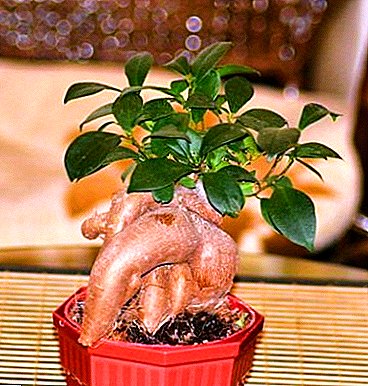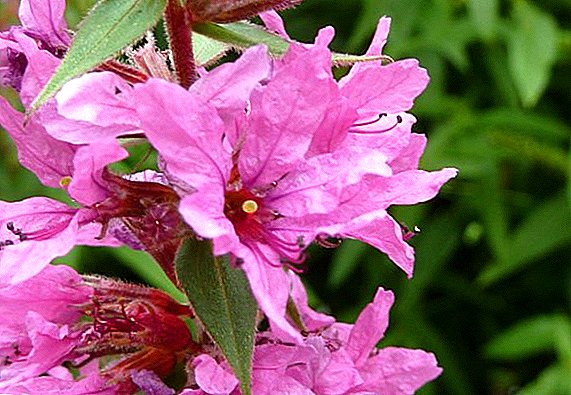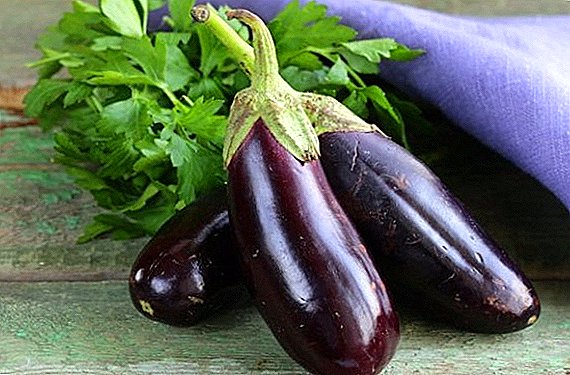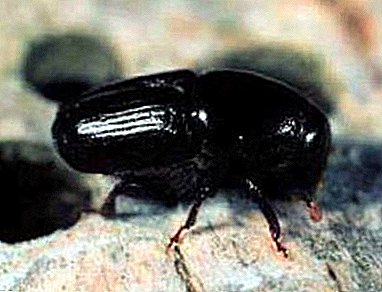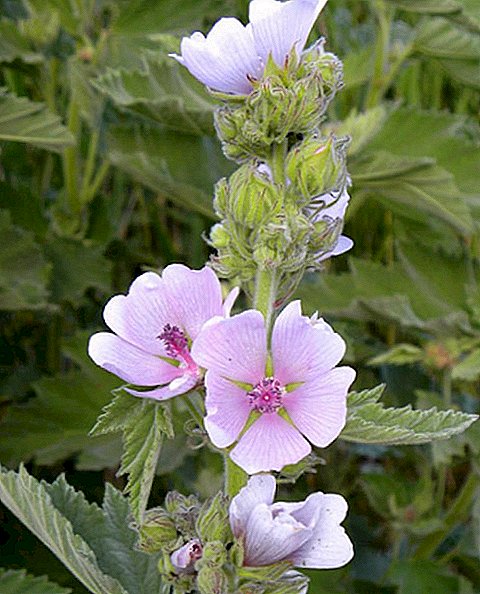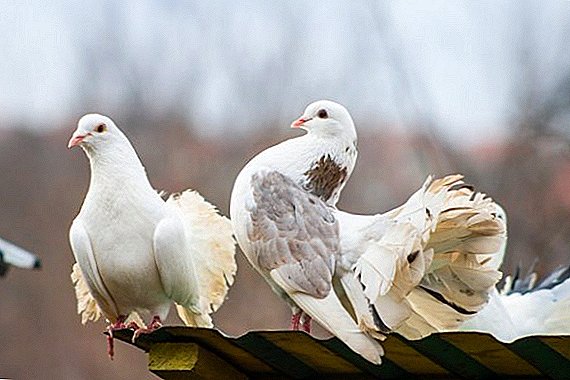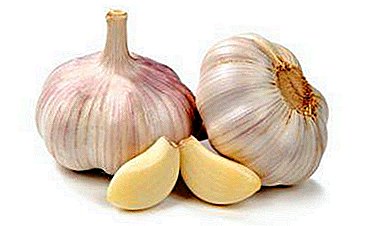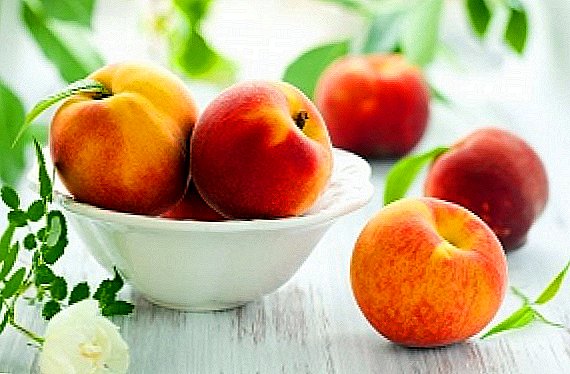
The peach tree is a southern plant that is quite demanding and sensitive to many factors when it is planted, in the process of growing and caring for it. Peach fruits are very useful and tasty, they contain a lot of useful substances and vitamins.
Due to its healing properties, it is very often introduced into the diet of various diets for many diseases. The ripe fruits of peach contain many organic acids, essential oils, mineral groups, ascorbic acid, pectic matter, as well as carotene and many other useful elements.
But in order to grow a fruit tree, it is necessary to adhere to certain rules for its care from the very beginning of the acquisition. Namely, it concerns the preparation for planting and the peach planting itself.
Preparing for landing

Laying a peach orchard is necessary to know a few important rules for its planting. These secrets will subsequently influence the development and growth of the plant:
- first, when acquiring a tree, one should definitely pay attention to its root and skeletal branches. Preparing a seedling for transportation, the rhizome of the plant is wrapped in a damp cloth, and the culture itself is placed in a bag, it can be polyethylene. It is very important that when transporting a sapling there are no sudden changes in temperature, and its root does not overheat and does not dry. It is worth noting that the young annual plant takes root in the best way.
- secondly, an important factor is the place where the peach will live. It is necessary to take into account that this is a light-loving culture, which is very fast in growth and fruiting - the harvest of tasty fruits can already be harvested by the 3rd year after planting.
- thirdly, the peach likes sunny, bright places, in which there is no access to gusts of wind. The southern, south-western and western side of the site, where there is an excellent air regime, and especially if it is a slope, is perfect. If there is any fence or wall in the garden plot, placing a delicate peach tree under it would be an ideal option. The existing structure will become in the future an excellent barrier to the north and east cold winds, and the tree will also receive additional heat from its heated surface.
- Fourthly, the peach absolutely does not tolerate shade, so it is usually planted far from old trees. In a shaded place, young shoots of plants do not have time to acquire bark by autumn, and flower shoots are not laid on it. This lowers the yield and badly affects the quality of the fruit. And everything in the complex can even destroy the tree.
- Fifth, when planting a peach, it is also worth avoiding low-lying, damp and wetlands. And those areas where the air can not warm up for a long time.
What are the requirements for soil

Be sure, before planting a peach, you must find out the composition of the land on the plotwhere it will grow, it depends on how the young tree will take root in a new place and whether it will live there.
So:
- the peach tree is not suitable sandy light land with a large groundwater abundance;
- it will not grow on waterlogged and heavy loamy soil;
- if we take, in general, the peculiarities and preferences of the peach, then it should be noted that well-drained fertile soil is suitable for it. It can be arranged by any type of land, if a good drainage is created in the ground; for this, stones, gravel, brick chips and other suitable material are poured out at the bottom of the pit for planting;
- choosing a site for peach, it should be remembered that this is a southern plant that grows best on medium loamy soil with excellent moisture and air exchange;
- another plant loves black soil, which is rich in humus.
First of all, the soil on which the young tree will be planted must be dug up. This is done to saturate the earth with oxygen, to cleanse various weeds and their roots.
If during the inspection of the land it was determined that the soil is poor in trace elements, the place for the tree should be prepared a year before the planned landing.
Therefore, in the fall in the pit for planting:
- fertilizers and organic, and mineral;
- manure, superphosphate, potassium chloride and wood ash are added to the ground for digging;
- all fertilizers are thoroughly mixed with the earth, then trees are fed with this mixture.
Are fertilizers needed?

The composition of the soil also affects the amount of micronutrients necessary for growth and the normal development of the tree, which are introduced during planting and then constantly added in the process of caring for the tree. For example, sod-podzolic light soil with a low content of organic elements, for normal fruiting and growth of garden crops, requires annual mineral and organic nutrition.
Podzolized soils are fed with nitrogen, potash, phosphorus, and sometimes organic fertilizers. During fertilizer, it is still worth considering the frequency of watering the garden. Frequent watering contributes to leaching a substantial portion of the fertilizer. Thus, a regularly watered garden should be fed with a large amount of fertilizer.
During the spring digging, in the first years of the life of a young tree - this is 2-3 years after planting, nitrogen fertilizers are poured into the near-stem zone. This ammonium nitrate, and urea. And also, with the same periodical, make organic fertilizers. In the process of growing a tree, the rate of fertilizer is progressively increased by 15-20 g every 2-3 years.
Still, any orchard is fertilized with so-called green saltpeter. To do this in the aisle peach tree crops such as oilseed radish, colza, lupine and canola are sown. These plants act as a siderat and can replace humus.
Something about landing pit

Early in the spring most trees are planted. Try to do this before bud break. Peach tree, many gardeners also recommend to plant in this period. For disembarking prepare special pits. Desirable dig holes according to a previously prepared plan, since autumn, before the onset of the first cold weather. In this case, the rows should be located on a flat segment in the direction from south to north.
And if the landing plan on the slope, then rows are placed across the slope. The size of the landing pit should correspond to the average size. But, it is necessary to dig it up so that the whole root of the young tree is conveniently located in the pit. A standard pit for peach is considered to be a pit of size, where the depth is 50-60 cm, and the diameter is 40-50 cm.
How to choose a sapling

When buying seedlings of any plant, it is worthwhile to regularly use the most important rule - to buy garden crops, and any other crops, it is necessary only in special stores or at specialized points.
To begin with, determine the type of peach, which will best suit the climatic conditions of the site of the planned landing. In addition, when buying a plant, be sure to check with the seller where the sapling is brought from and whether it can adapt to your area.
During such an important purchase, it is also necessary to carefully inspect the place where the stock grew with the graft. It should look smooth, without juice and sagging.
Be sure to inspect the rhizome and seedling bark. In a healthy seedling, on the place where the bark is damaged, the green layer remains, not the brown layer. When cutting the roots with sharp shears, the middle of the cut should have a white color, this means that the seedling is alive.
Preparing a seedling for planting

During the spring planting of a peach tree, you need to be quite careful and attentive. Often, young trees are purchased in advance in the fall, and they are added in them for further transplantation until spring.
As a rule, moisture and heat act on a prikopanny sapling, it contributes to the swelling of the buds on the branches and trunk. Such buds are very delicate and rather easily damaged, which is very harmful for the young tree. With an inaccurate transplant, there are many breakages of just such young buds that, subsequently, can affect the proper growth of the young peach.
Preparing a seedling for planting, they cut all the dry parts of the root on it. And if the root is dried up, it is additionally placed in water for 24 hours. Then the tree is planted in a prepared pit at the bottom of which a mound is poured from a layer of soil mixed with fertilizers. A tree is planted on this hillock, its roots are laid out and evenly covered with earth.
At the same time, the vaccinated place is left 4-5 cm above the ground, and the seedling's tummy is turned to the north. After that, the soil is trampled down (to do this correctly in the direction of the tree trunk), and the tree itself is watered well with 2-3 buckets of water. A layer of earth on top of mulch 8-10 cm of manure.
Planted best yearling seedlings. At the same time, 3-4 strong branches are left on the plant from the bottom, which are pruned, leaving only 3-4 buds. The top branch, which is the trunk, is also shortened.
It is also interesting to read about popular peach varieties.
We proceed to planting a sapling.

Peach Tree Planting recommended to produce in a state of his peace. This period is in the spring.
Of course, this crop can be planted in the fall, especially if it concerns southern areas with milder climatic conditions, but such planting leaves the risk that this heat-loving tree will not tolerate low temperatures and still die in the winter, which we would not like.
When can I plant?
Peach fruit tree in the best way survives after spring planting. The reason for this is the southern origin of this culture. Planting such trees in the fall, we practically do not give them the opportunity to prepare for lower temperatures. And an unprepared tree is most likely to freeze when severe frosts occur.
Thus, the peach seedlings are planted in the spring before the first buds bloom, somewhere in early March. This period is considered favorable also because there is a sufficient amount of moisture in the ground necessary for the growth of a young tree.
About the depth of landing
Planting any tree should take into account the depth of planting the seedling. For peach hole dug about 40-50 cm deep. At the same time, the place where the tree was grafted should go 5-10 cm deep into the ground.
If the tree is deeply deepened into the soil, it will contribute to the necrosis of the lower part of the bark of the trunk, which negatively affects the tree itself and its proper development. In case of insufficient planting depth, the root of the tree will be subject to weathering, which will also adversely affect its growth. Therefore, this depth is the best option for planting.
Are fertilizers needed?

Spring feeding for garden plants, including peach, is a very important element of care, since it is during this period that the tree begins to grow and gain strength for flowering and subsequently bear fruit.
Peach enough unpretentious in feeding, but still some fertilizer rules for this plant exist. This is especially true of his landing.
Directly do not recommend feeding the soil during planting. It can burn the young roots of a young tree. All fertilizers, both mineral and organic, are added to the planting pit since autumn.
Proper tree care
Having planted a peach tree, while adhering to all the listed rules, it is also important not to forget that now the plant requires constant attention, care and care. And its correct growth, development and regularity of fruiting will be influenced by how it is watered, protected and fed.
First about watering

Regardless of the planting time, mulching and watering play an important role in the survival of young peach trees and their further development. Mulch prevents the appearance of a crust and cracks in the ground near the tree, and also affects the reproduction of worms, which contribute to the aeration of the soil in the stalk zone of the plant.
Peach tree resistant to dry weather, but still the lack of a sufficient amount of moisture affects the development of the plant, its yield, and the quality of the fruit. In dry weather, the tree is watered starting in June and ending in August once every two to three weeks. During irrigation, 1-2 buckets of water are poured into the stalk zone.
Further on top dressing
After planting a peach, the soil near his circle is mulched all the time. This prevents drying and cracking of the ground, which adversely affects the root of the tree, and can affect its growth and development. With the same purpose, after planting, around the trunk, you can make a small slide out of the ground about 30 cm high. This will also help retain moisture and prevent the winding of the ground and the root system of the tree.
Every year minerals are added to the tree trunk zone.
In the spring, these are nitrogenous fertilizers (ammonium nitrate) or urea.
In the fall - phosphate and potash fertilizers.
It is very useful to make manure and humus once every 2-3 years.
Quite often, experienced gardeners use the so-called "green" dressing. For this garden aisle sow different special cropsfrom which, subsequently, green fertilizers are obtained.
Go to the protection of the tree

Peach is a very tender plant, which is prone to many specific diseases, and which pests are very fond of. The main enemies of the peach tree are monilioz (fruit gray rot), powdery mildew, and deciduous curl. All three diseases are fungal, which can be prevented, and do not let the tree get sick.
Moniliosis fungus winters in affected branches and dry fruits. Therefore, an effective method of combating this disease is three pruning plants. The same method is used when dealing with powdery mildew.
First pruning done early in springThe second - a week after flowering, and the last - in the fall. Cut branches, collected rotten fruit and dry leaves, infected with a sore, necessarily burn.
Deciduous curvature is also a fungal disease, the main method of control of which is to sprinkle a tree with a Bordeaux mixture or Horus. This procedure is carried out three times a year: before the first leaves appear, in the fall and after the foliage falls.
Peach requires protection and in winter. To do this, the tree is covered with burlap or other material at hand. There is a very affordable way to protect against frost - it is a mound 50-60 cm high, which is constructed in the fall from the ground around the tree trunk, and it is disassembled in the spring.
Thus, knowing all the features and secrets of planting a peach, planting this useful tree and caring for it is not difficult. At the same time, a beautiful, well-groomed tree will grow in the garden, and on the table there will always be juicy, sweet peach fruit.


